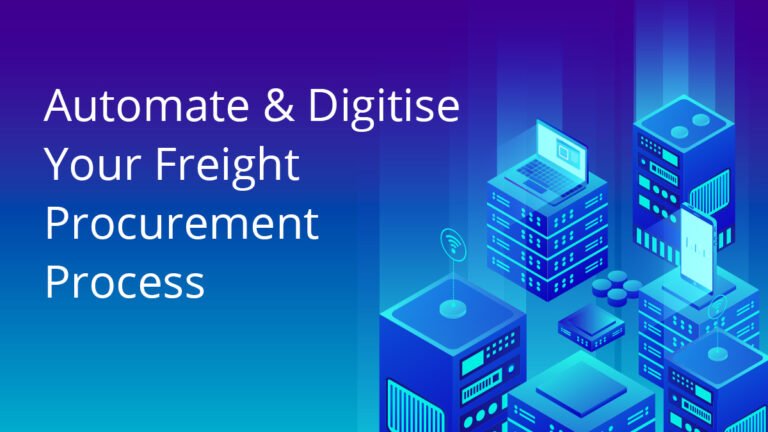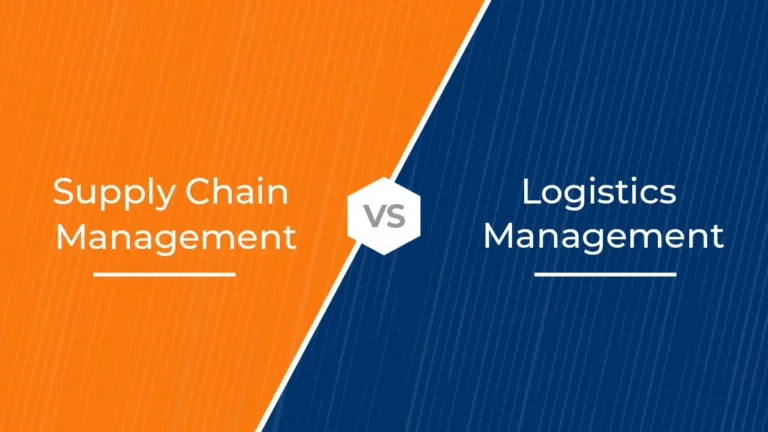Supply Chain Finance: A Complete Guide for Businesses
In today’s complex global economy, businesses rely on intricate supply chains to maintain a steady flow of goods. Supply chain finance (SCF) plays a critical role in ensuring these processes run smoothly, particularly by addressing payment delays that could disrupt production.
For example, when a company sources raw materials from suppliers worldwide, any delay in payment can stall production. It provides a solution by ensuring timely payments, thus preventing potential disruptions.
Recent data from BCR Publishing highlights the growing importance of SCF, with global volumes reaching an impressive US$2,184 billion—a 21% increase from the previous year. This growth underscores its essential role in supporting businesses of all sizes.
Simply put, SCF ensures that suppliers receive timely payments, buyers can maintain uninterrupted operations, and supply chains remain resilient, regardless of challenges. Whether supporting a small startup or a multinational corporation, It is the unsung hero that keeps global commerce moving efficiently.
How Does Supply Chain Finance Work?
It is a chronological question as we shed light on supply chain finance. Supply chain finance precisely works as a collaborative financial solution that empowers buyers to support their suppliers while optimizing their working capital. It fosters resilience, efficiency, and mutual benefit across the supply chain ecosystem.
1. Initiating the SCF Program:
The journey begins when a buyer, often a large corporation with significant purchasing power, decides to implement an SCF program. The buyer typically partners with a financial institution or SCF provider to set up the program. This collaboration lays the foundation for facilitating early payments to suppliers while optimizing working capital for both parties.
2. Identifying Eligible Suppliers:
With the SCF program in place, the buyer identifies eligible suppliers to participate. These suppliers often have a stable financial standing and a history of reliable performance. The buyer extends an invitation to join the program, offering the benefits of accelerated payments on approved invoices.
3. KYC and Due Diligence:
Before suppliers can onboard the SCF program, the financial institution conducts Know Your Customer (KYC) and due diligence procedures. These checks verify the identities of the buyer and suppliers and assess their financial stability and creditworthiness. This critical step ensures the integrity and security of the process.
4. Supplier Invoicing:
Once suppliers are onboarded, they continue their normal business operations, invoicing the buyer for goods or services rendered. These invoices serve as the basis for initiating the SCF transactions. Suppliers submit their invoices to the financial institution or SCF provider, indicating their desire to receive early payment.
5. Invoice Approval and Financing:
Upon receiving supplier invoices, the financial institution reviews and approves them for financing. This step involves verifying the authenticity of the invoices and confirming that they meet the agreed-upon terms and conditions. Once approved, the financial institution advances a percentage of the invoice value to the supplier, typically around 80% to 90%.
6. Buyer Payment and Settlement:
As the payment due date approaches, the buyer fulfills their obligation by settling the invoice with the financial institution. The buyer remits the full invoice amount, including any applicable fees or charges, to the financial institution’s designated account. This payment serves to extinguish the buyer’s liability and completes the settlement process.
7. Supplier Reimbursement:
Upon receiving payment from the buyer, the financial institution reimburses the supplier for the remaining portion of the invoice value, minus the agreed-upon financing fees. This final step ensures that suppliers receive the full value of their invoices, albeit slightly reduced due to financing costs.
8. Program Monitoring and Management:
Throughout the process, the financial institution provider diligently monitors program activity, ensuring compliance with established procedures and regulations. They also manage communication between buyers and suppliers, facilitating a smooth and transparent transaction experience for all parties involved.
The Benefits of Implementing Supply Chain Finance
Implementing supply chain finance comes with a host of benefits for both suppliers and buyers, bringing about improved financial stability and operational efficiency.
For suppliers, SCF opens up avenues for early payment on invoices, significantly boosting cash flow and liquidity. This timely access to funds allows suppliers to better manage their working capital, steering clear of costly short-term financing options and paving the way for strategic investments in growth ventures. Furthermore, it fosters stronger supplier relationships by offering predictable payment terms and reducing the risk of payment delays or defaults, thereby nurturing trust and collaboration within the supply chain community.
On the flip side, buyers stand to gain from SCF by optimizing their working capital utilization and bolstering ties with suppliers. By facilitating prompt payments to suppliers, buyers can negotiate advantageous terms, such as discounts or extended payment periods, all without straining their liquidity. This enhanced management of cash flow enables buyers to channel resources into innovation, expansion, or debt reduction, driving sustained value creation and a competitive edge. Additionally, it simplifies transaction processes, trimming administrative overheads and enhancing operational efficiency across the supply chain.
Also Read: Supply Chain Planning Simplified: A Practical Guide
Key Components of a Successful Supply Chain Finance Program
A successful supply chain finance program hinges on several key components, each playing a crucial role in its effectiveness and sustainability.
1. Technology Platforms: Implementing robust technology platforms is paramount for automating and streamlining its processes. These platforms facilitate seamless communication and collaboration between buyers, suppliers, and financial institutions. Advanced SCF platforms offer features such as invoice management, payment processing, risk assessment, and reporting capabilities.
2. Partnership Agreements: Establishing clear partnership agreements among all parties involved is essential for defining roles, responsibilities, and expectations. Buyers, suppliers, and financial institutions must collaborate closely to ensure smooth implementation and operation of the SCF program. Partnership agreements should outline terms and conditions related to financing, payment terms, dispute resolution, and confidentiality to mitigate risks and foster trust among stakeholders.
3. Financial Terms: Defining favorable financial terms is crucial for incentivizing participation in the SCF program. Buyers should offer suppliers competitive financing rates and flexible payment terms to encourage early invoice payment. Financial terms may include discount rates, funding costs, repayment terms, and penalties for late payments. Negotiating mutually beneficial financial terms ensures that both buyers and suppliers derive value from the program, driving increased adoption and participation.
4. Risk Management Framework: Developing a robust risk management framework is vital for identifying, assessing, and mitigating risks associated with SCF transactions. Financial institutions play a pivotal role in evaluating the creditworthiness of buyers and suppliers, assessing transactional risks, and implementing risk mitigation strategies.
5. Regulatory Compliance: Adhering to regulatory requirements and compliance standards is imperative for ensuring the legality and legitimacy of SCF transactions. Buyers, suppliers, and financial institutions must comply with relevant laws, regulations, and industry standards governing financial transactions, data privacy, and consumer protection.
Supply Chain Finance vs. Traditional Financing
Supply chain finance and traditional financing represent two distinct ways of managing cash flow and funding business operations. While they both aim to provide liquidity, they differ significantly in their approach, risk factors, costs, and efficiency.
It is all about optimizing the financial interactions between buyers and suppliers within a supply chain network. It allows suppliers to get early payment on their invoices, typically arranged by the buyer, leveraging the buyer’s stronger credit rating. This setup reduces risks for both parties, as suppliers can access funding at lower costs compared to traditional methods like factoring or bank loans.
On the other hand, traditional financing involves direct borrowing from financial institutions, such as banks or lenders, usually based on the borrower’s creditworthiness and collateral. This can include loans, lines of credit, or trade credit, where the borrower takes on the primary responsibility for repayment. Unlike SCF, where the buyer’s credit rating influences the cost of financing, traditional financing relies solely on the borrower’s creditworthiness, potentially resulting in higher interest rates and stricter terms, especially for suppliers with weaker financial standings.
One key difference lies in the efficiency and flexibility it offers compared to traditional financing. It streamlines payment processes, reduces administrative burdens, and fosters stronger buyer-supplier relationships. It offers quicker access to funds for suppliers and improves cash flow predictability. In contrast, traditional financing methods may involve lengthy approval processes, paperwork, and collateral requirements, leading to delays and inefficiencies.
Moreover, SCF creates a win-win situation for both buyers and suppliers, aligning their interests and promoting collaboration. Buyers benefit from optimized working capital management and enhanced supply chain resilience, while suppliers gain access to affordable financing, reduced credit risk, and increased liquidity to fuel growth initiatives.
In summary, while traditional financing remains important, supply chain finance offers a more collaborative, efficient, and cost-effective approach to managing cash flow and driving value across the supply chain.
Challenges and Solutions in Supply Chain Finance
Implementing supply chain finance can be a daunting task for companies, but with the right strategies and solutions, these challenges can be overcome effectively.
- Many suppliers may be unfamiliar with SCF processes or hesitant to participate due to concerns about confidentiality or changes in payment terms. To address this, companies can provide comprehensive training and support to suppliers, explaining the benefits and offering assistance with the onboarding process. Clear communication and transparency regarding the impact on suppliers’ cash flow can help alleviate concerns and encourage participation.
- In integrating SCF technology with existing systems and processes, companies may encounter compatibility issues or data integration challenges when implementing platforms, leading to delays and inefficiencies. To mitigate this challenge, companies should invest in flexible SCF solutions that can seamlessly integrate with their ERP systems and other financial software.
- Managing risk is a significant concern in SCF, particularly regarding credit risk and fraud. Companies must assess the creditworthiness of both buyers and suppliers to mitigate the risk of default and non-payment. Implementing robust risk management processes, such as credit insurance or credit guarantees, can help protect against financial losses and ensure the stability of the programs.
- Regulatory compliance presents a challenge for companies operating in multiple jurisdictions. SCF programs must adhere to various legal and regulatory requirements, including anti-money laundering (AML) and know-your-customer (KYC) regulations. Companies should stay informed about relevant regulations and ensure their SCF programs comply with local and international laws. Working with legal experts and compliance professionals can help companies navigate regulatory complexities and mitigate compliance risks effectively.
Getting Started with Supply Chain Finance
- Assess Your Supply Chain: Begin by evaluating your current supply chain processes and identifying areas where supply chain finance could bring value. Look for opportunities to optimize working capital, reduce costs, and improve cash flow throughout the supply chain.
- Engage Stakeholders: Gain buy-in from key stakeholders, including finance, procurement, and supply chain management teams. Collaborate closely with these teams to understand their needs and priorities, and involve them in the decision-making process to ensure alignment with organizational goals.
- Research Providers: Research supply chain finance providers to find the right partner for your business. Consider factors such as expertise, technology capabilities, industry experience, and reputation. Look for providers with a track record of success and a strong understanding of your industry and supply chain dynamics.
- Develop a Strategy: Develop a comprehensive strategy for implementing supply chain finance within your organization. Define clear objectives, establish performance metrics, and create a roadmap for implementation. Consider factors such as supplier onboarding, technology integration, risk management, and compliance.
- Start Small: Begin with a pilot program or select a subset of suppliers to test the effectiveness of supply chain finance within your organization. Starting small allows you to minimize risk, gather feedback, and refine your approach before scaling up to larger initiatives.
- Provide Training and Support: Offer training and support to suppliers to help them understand the benefits of supply chain finance and navigate the onboarding process. Provide clear communication, resources, and assistance to suppliers to ensure a smooth transition and maximize participation.
- Monitor and Evaluate: Continuously monitor and evaluate the performance of your supply chain finance initiatives. Track key metrics such as cost savings, working capital optimization, supplier satisfaction, and operational efficiency. Use this data to make informed decisions and iterate on your strategy as needed.
As supply chains evolve, so do the financial strategies supporting them. If you want to understand the broader supply chain landscape before diving into financial trends, check out our brief guide about supply chain. Future trends in supply chain finance are likely to be shaped by advancements in technology and evolving market dynamics. One prominent trend is the increasing adoption of blockchain technology to enhance transparency, security, and efficiency in supply chain financing processes.
Future Trends in Supply Chain Finance
Future trends in supply chain finance are likely to be shaped by advancements in technology and evolving market dynamics. One prominent trend is the increasing adoption of blockchain technology to enhance transparency, security, and efficiency in supply chain financing processes.
The UK passed the Electronic Trade Documents Bill in July 2023, giving legal weight to electronic trade documents like bills of lading. This law, based on the UN’s model law from 2017, is expected to significantly impact trade. Estimates suggest electronic bills of lading alone could cut costs by $6.5 billion and enable an additional $40 billion in global trade.
Additionally, artificial intelligence and machine learning algorithms will play a crucial role in optimizing risk assessment, credit scoring, and decision-making within supply chain operations. The integration of supply chain planning software with these technologies can further enhance demand forecasting, inventory management, and operational efficiency. Furthermore, the rise of sustainable finance practices may lead to the development of green supply chain finance solutions, incentivizing environmentally responsible practices. As supply chains become more interconnected and globalized, leveraging advanced planning software alongside innovative financing models will foster greater collaboration and value creation across supply chain networks.
In summary, the strategic value of supply chain finance cannot be overstated. By leveraging this innovative approach, businesses can optimize cash flow, reduce financial risks, and foster collaborative relationships with suppliers. Companies must recognize the pivotal role of supply chain finance in enhancing their financial well-being and operational efficiency.





![Trump’s Second-Term Tariff Impact: The 2018 Deja Vu [UPDATED] 6 Trump’s Second-Term Tariff Impact: The 2018 Deja Vu [UPDATED]](https://www.gocomet.com/blog/wp-content/uploads/2024/11/Trumps-Second-Term-The-2018-Deja-Vu-1-768x384.webp)
